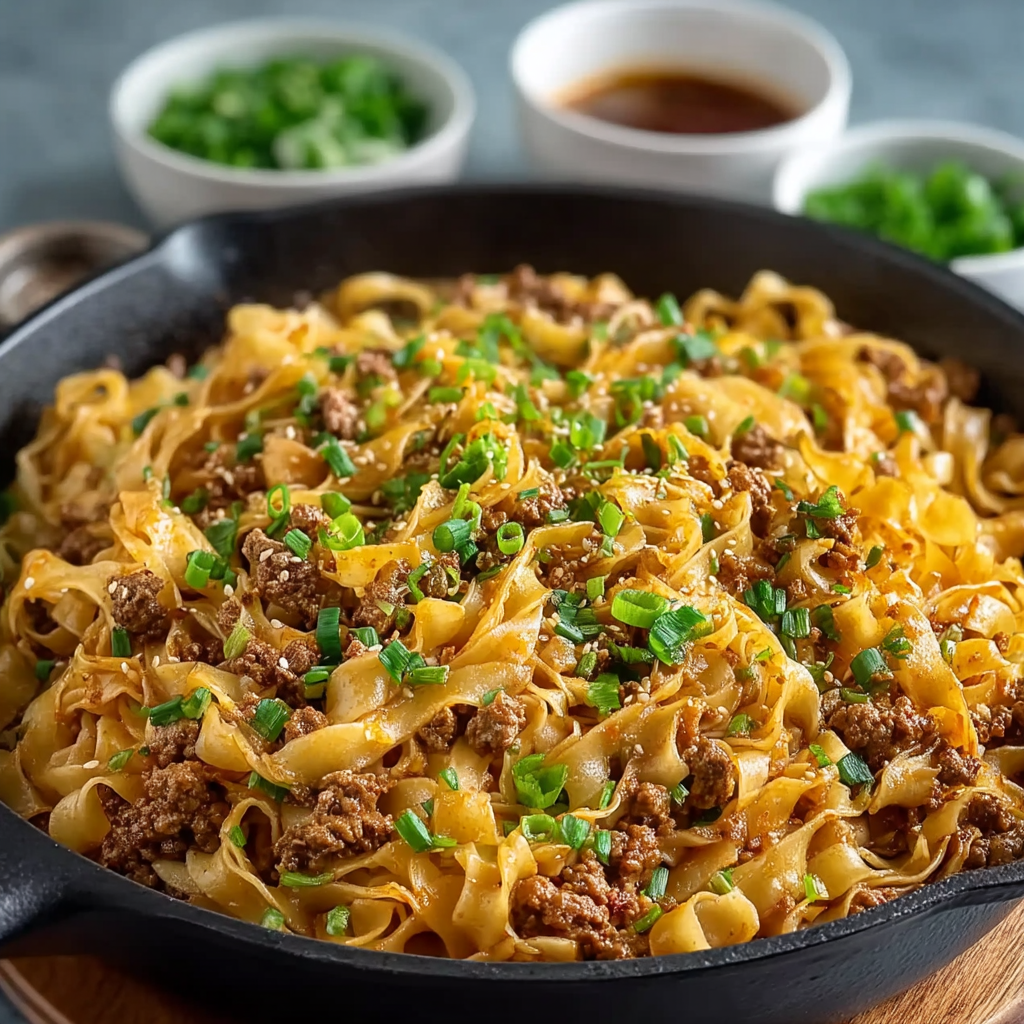1. Introduction to the Recipe
Engaging and sizzling from the very first sentence, Mongolian Ground Beef Noodles brings together the bold, rich flavors of savory ground beef in a sticky, sweet-salty sauce, coated in wide noodles that soak up every drop. Picture tender noodles enveloping caramelized beef, hints of ginger-laced warmth, garlic-laced aromatics, and a drizzle of nutty sesame oil that elevates every bite. This is not your average beef-and-noodle skillet—this is Mongolian Ground Beef Noodles, an irresistibly comforting meal that marries Asian-inspired sauces with accessible pantry staples.
If you love this flavor profile, you might also enjoy a classic Beef and Broccoli Stir-Fry with a similar umami-sweet punch. For more insight into choosing the best wide noodles—whether lo mein, flat rice noodles, or even spaghetti—check out this helpful noodle guide to maximize texture and sauce absorption.
In this introduction, I’ve woven in the key phrase Mongolian Ground Beef Noodles naturally to enhance SEO, describing its appeal with vivid sensory details. This dish is perfect for weeknight dinners when you crave sophistication without fuss: it’s fast, crowd‑pleasing, and deeply satisfying. With bold aromatics (garlic and ginger), a sticky-sweet soy-honey-hosin balance, and the option to dial up heat with Sriracha or red pepper flakes, it’s endlessly customizable. Whether you’re cooking for family, meal-prepping, or hosting friends, this recipe promises a flavorful win.
2. Basic Recipe: Ingredients and Instructions
Print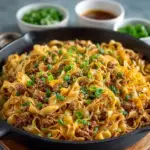
Mongolian Ground Beef Noodles
Description
Mongolian Ground Beef Noodles for a quick, savory weeknight dinner—bold flavors, easy steps, and true Mongolian Ground Beef Noodles satisfaction.
Ingredients
-
450 g (1 lb) ground beef (80/20 or 85/15)
-
300 g (10–12 oz) wide noodles (lo mein, flat rice noodles, or spaghetti)
-
4 cloves garlic, minced
-
1 tablespoon fresh ginger, grated
-
4 green onions, sliced on the bias (separate white and green parts)
-
¼ cup low-sodium soy sauce
-
2 tablespoons brown sugar
-
1 tablespoon hoisin sauce
-
1 teaspoon Sriracha or ¼ teaspoon red pepper flakes (optional, to taste)
-
1 tablespoon cornstarch
-
2 teaspoons sesame oil
-
1 tablespoon vegetable oil
-
½ cup water (or beef broth)
Instructions
-
Prep noodles: Cook the noodles according to package directions until al dente. Drain and set aside.
-
Make the sauce: In a small bowl, whisk together soy sauce, brown sugar, hoisin sauce, optional heat (Sriracha/red chili), cornstarch, and water (or broth). Stir until smooth; set aside.
-
Cook aromatics: Heat vegetable oil over medium-high heat in a large skillet or wok. Add minced garlic, grated ginger, and the white parts of green onions. Sauté until fragrant, about 30 seconds.
-
Brown the beef: Add ground beef, breaking it up with a spatula. Cook until no longer pink and beginning to brown.
-
Add the sauce: Pour in the prepared sauce. Stir and bring to a simmer. Let it cook for about 2–3 minutes, until the sauce thickens and coats the meat.
-
Combine with noodles: Add the cooked noodles into the pan, tossing gently to coat them evenly in the sauce.
-
Finish & season: Drizzle sesame oil, stir through, then sprinkle the green onion greens. Taste and adjust seasoning—add more soy for salt, brown sugar for sweetness, or Sriracha for heat.
-
Serve immediately, optionally garnished with sesame seeds or extra green onions.
Notes
Brown your beef well—those browned bits add deeper flavor.
Stir the cornstarch into cold liquid first to avoid lumps.
Taste the sauce before adding noodles to ensure correct balance.
3. Advanced Techniques
1. Balancing Sweet‑Savory with Layered Saucing
For a more nuanced flavor, split your sauce: add half when the beef first simmers, blend in some soy, sugar, and hoisin early. After the noodles are added, drizzle the remaining sauce and toss again. This dual-step method layers flavors deeply into both beef and noodles so every strand is equally saucy and flavorful. It creates a richer complexity, especially if you let the sauce reduce slightly before combining.
2. Browning Beef in Two Stages
Rather than cooking all the beef at once, brown half first, remove it, then brown the second half. Combine afterward. This avoids overcrowding, which can cause steaming instead of proper browning. You’ll get crispy edges and Maillard flavor—giving that irresistible “chewy‑crispy” texture contrast once everything is married with the sauce.
3. Deglazing for Extra Flavor
After browning the beef, deglaze the pan with a splash of water, broth, or even a little sherry before adding the sauce. Scrape up those fond bits stuck to the pan—they hold intense savory flavor crucial to elevating the dish. It’s an easy technique with major payoff for richer umami depth.
4. Using Alternate Noodles for Textural Contrast
Try soaking dried wide rice noodles until pliable, then flash‑frying them in sesame oil before combining with the beef. These “crispy pads” contrast with the saucy meat superbly. Or use fresh lo mein: toss them straight in cold, not fully cooked—the heat of the sauce warms them through while keeping them springy. Changing noodle texture transforms the entire mouthfeel of the dish.
5. Infusing Aromatics for Fragrant Themes
Before cooking, lightly toast minced garlic, grated ginger, and the white parts of green onions in sesame oil instead of vegetable oil. The nutty aroma of toasted sesame heightens the fragrance dramatically. Finish with a final swirl of toasted sesame oil—depth of aroma leaps from good to gourmet.
See more advanced recipes at cookingwhite.com
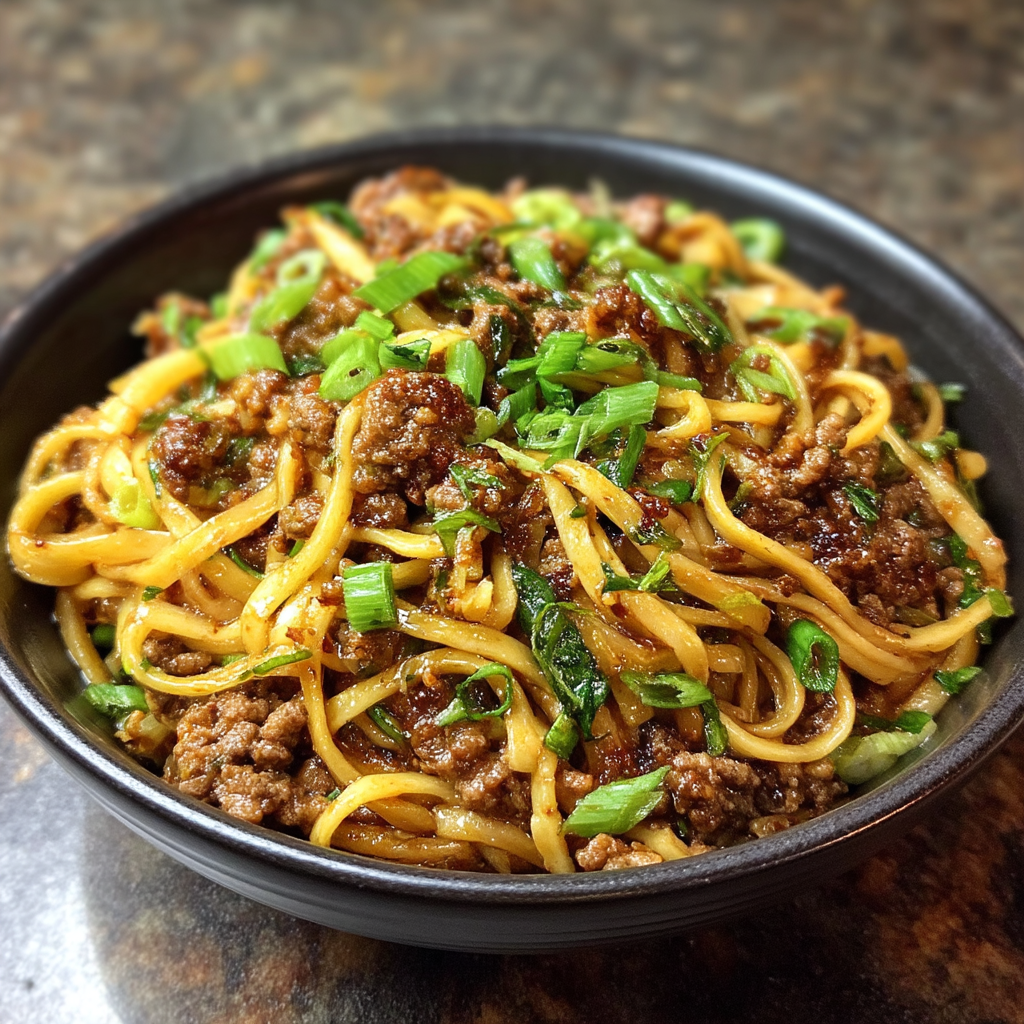
4. Storage, Shelf Life, and Maintenance Tips
1. Refrigerator Storage Best Practices
Store leftovers in an airtight container in the fridge. For optimal freshness, use within 3–4 days. The sauce can congeal—when reheating, add a splash of water or broth and gently reheat on low to restore sauciness while preventing dryness.
2. Freezing for Longer Preservation
You can freeze the beef mixture (without noodles) for up to 2 months. Portion into freezer-safe bags or containers. To reheat, thaw overnight in the fridge, then reheat gently with added liquid before tossing with freshly cooked noodles. This method keeps the meat flavorful without textural degradation from freezing wide noodles.
3. Preventing Noodle Sogginess
Store noodles separately if you plan ahead. Keep them lightly oiled and refrigerate. When ready to serve, reheat the sauce and beef, then stir in the noodles briefly to avoid over‑saturating or making them gummy.
4. Reviving Leftovers
If your dish has lost its luster (dry or clumped), add a small amount of beef broth, soy, or even a touch of hoisin when reheating. Gently toss over medium heat to rehydrate. A sprinkle of fresh green onions or a quick drizzle of sesame oil also restores fragrance and moisture.
5. Safe Room‑Temperature Holding
If serving buffet-style, keep the noodles warm (above 60°C/140°F). If left at room temperature, consume within 2 hours to maintain safety. After that, refrigerate promptly. If exposed longer, it’s best to discard rather than risk bacterial growth.
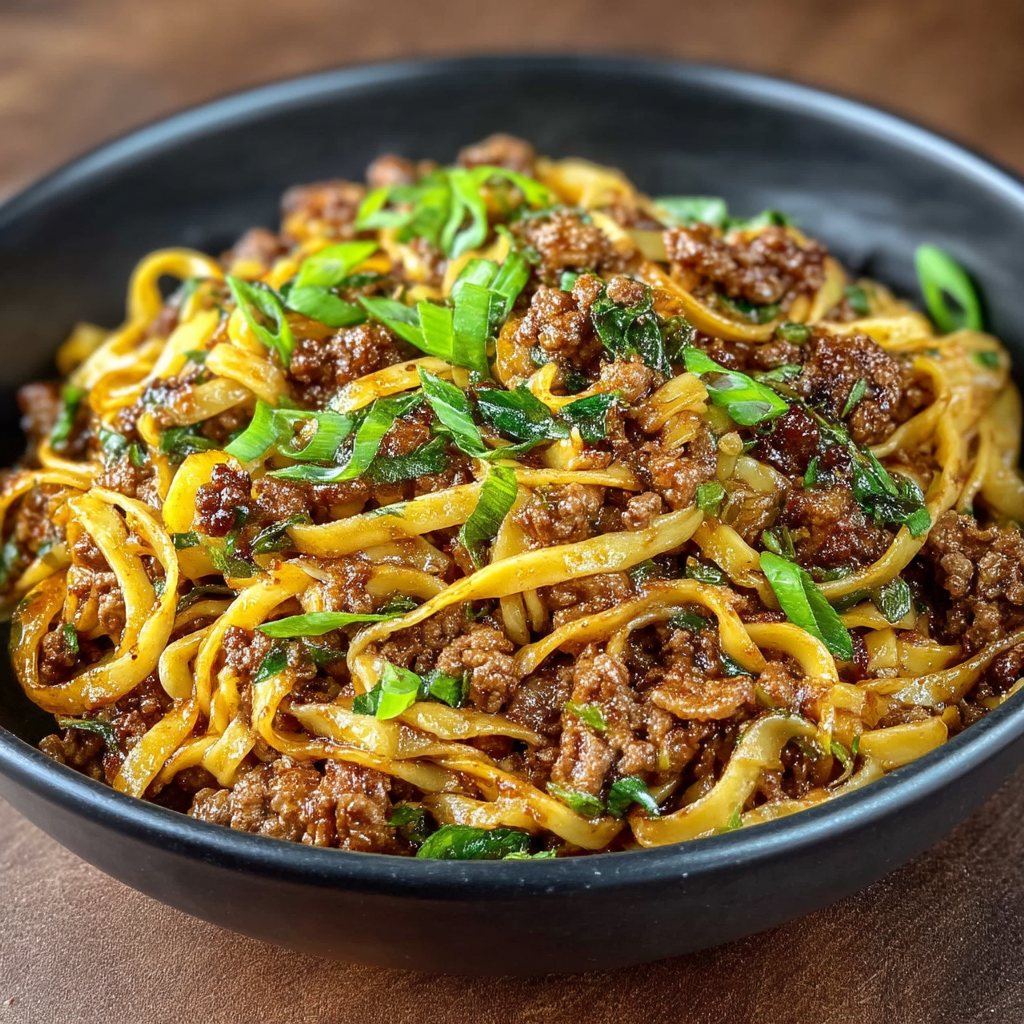
5. Dietary Adaptations and Substitutions
1. Vegan Version
Replace ground beef with crumbled firm tofu, tempeh, or plant‑based ground “beef.” Swap low‑sodium soy sauce with tamari (ensure gluten‑free if needed), and use maple syrup or coconut sugar in place of brown sugar. Add a teaspoon of miso for extra umami. For texture, crisp up tofu or tempeh in oil before adding sauce for better mouthfeel.
2. Gluten‑Free Adaptation
Use certified gluten-free wide rice noodles or gluten‑free spaghetti. Swap soy sauce with gluten-free tamari or coconut aminos. Ensure hoisin sauce is gluten-free, or substitute with a blend of miso, rice vinegar, and a touch of sweetener to mimic depth.
3. Low‑Sugar Option
Cut the brown sugar to 1 tablespoon, and use a sugar substitute like coconut aminos (which has natural sweetness) or monk fruit sweetener. Skip hoisin (which has sugar) and instead strengthen the umami with extra soy, garlic, and miso paste.
4. Nut‑Free
This recipe is already nut‑free. If adding optional garnishes like sesame seeds, be aware of allergies. For nutty flavor replacement, you can omit sesame oil and finish with a few drops of toasted sunflower seed oil if sesame is a concern—though best to just keep it simple.
5. Low‑Sodium Adjustments
Use low‑sodium soy sauce (as listed) and omit extra salt. Increase garlic, ginger, and a squeeze of lime or vinegar to brighten the flavor without adding sodium. A small splash of fish sauce (if not vegetarian) can intensify savory flavor, letting you reduce soy further while maintaining depth.
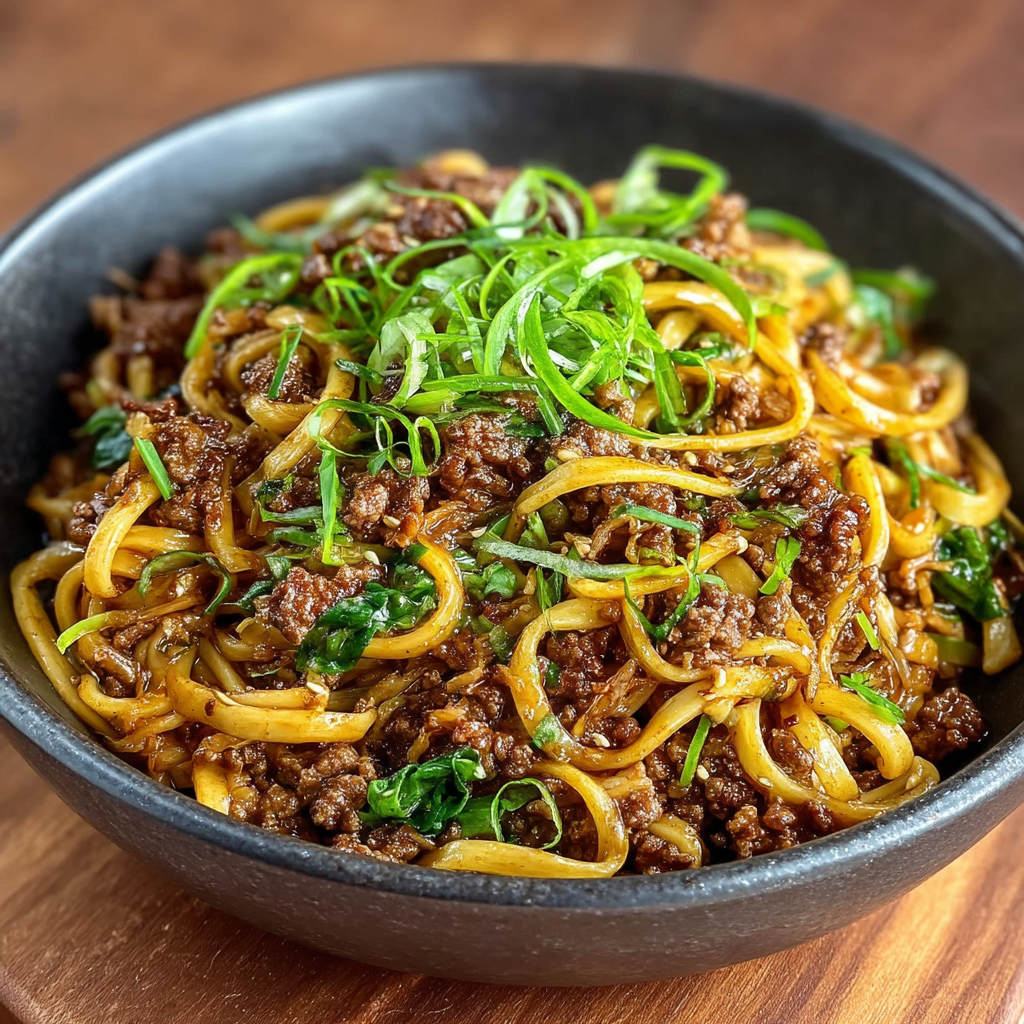
6. FAQs About the Recipe
1. Why are my noodles mushy or clumpy?
This may happen if they were overcooked or sat in sauce too long. Cook noodles al dente, drain well, and toss them lightly with oil before combining. If leftovers get clumped, reheat with a splash of water over medium heat, stirring gently to separate.
2. What if my sauce is too thin or thick?
Too thin? Whisk in a mixture of ½ teaspoon cornstarch and a tablespoon of cold water, then simmer briefly to thicken. Too thick? Add a splash of water or broth and stir to loosen. Getting viscosity right is key to coating both beef and noodles evenly.
3. Can I make this ahead of time?
Yes—cook and store components separately: keep the beef and sauce together, noodles alone. When ready, reheat the beef gently, add noodles to warm through. Alternatively, freeze just the beef‑sauce portion and mix with fresh noodles when you’re ready.
4. How to adjust heat level?
Start with the optional amount of Sriracha or red pepper flakes, then taste. For more kick, continue adding in small increments. You can also add fresh sliced chilies, chili oil, or a dash of ground Sichuan pepper for different heat profiles.
5. Can I add vegetables?
Absolutely! Thinly sliced bell peppers, snap peas, shredded carrots, or bok choy can be stir‑fried with the aromatics. Just add them right after sautéing the garlic and ginger, before adding beef. It adds texture, color, and nutrition without sacrificing flavor.
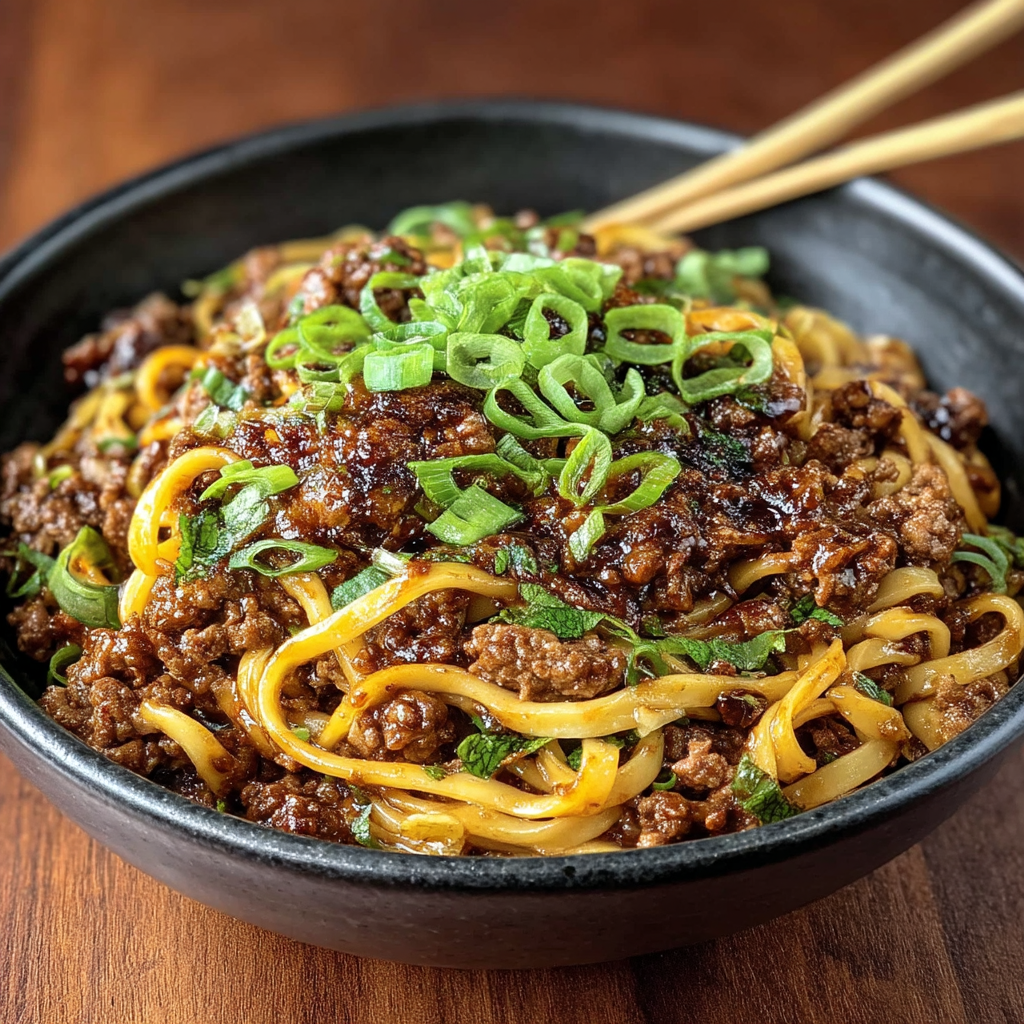
7. Conclusion & Final Thoughts
Mongolian Ground Beef Noodles strikes the perfect balance between effortless prep and bold, rewarding flavor—making it a reliably delightful choice for weeknight dinners, casual gatherings, or meal prepping for hearty lunches. The glossy, savory-sweet sauce clings to wide noodles and flavorful beef, offering comforting textures with aromatic gingery-garlic undertones and optional heat for extra allure. Whether you’re cooking solo or feeding a crowd, it’s easy to scale and customize while still delivering that restaurant-style satisfaction.
What makes this recipe especially great: it’s fast (you can go from pantry to plate in about 30 minutes), adaptable (meat, noodle, or diet swaps are straightforward), and utterly craveable—there’s something deeply appealing about that sticky glaze, tender noodles, and sweet-savory punch. The advanced techniques give you opportunities to elevate it: from better browning and layered sauce depth, to aromatic infusions and texture play with different noodles.
Plus, with thoughtful storage strategies, you can enjoy fresh-tasting leftovers or prep components ahead for quick assembly later. Whether you’re looking for a family-friendly comfort meal, a sweet-savory weeknight savior, or an impressive yet simple dish for friends, Mongolian Ground Beef Noodles checks every box.
So gather your ingredients, warm that skillet, and let the irresistible aroma of seared beef, garlic, and ginger guide you to a bowl of noodle bliss—flavorful, satisfying, and distinctly Mongolian Ground Beef Noodles. Enjoy every savory, saucy, noodle-laden bite!

